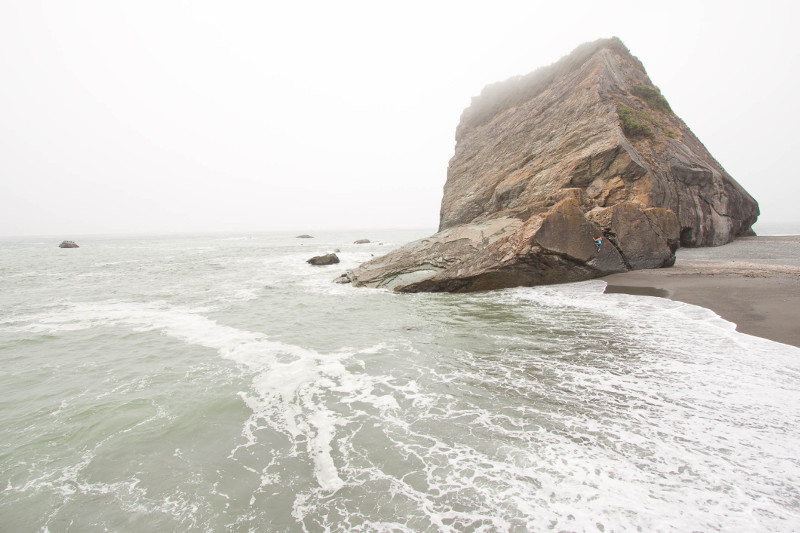Dean Fleming was born and raised in Sonora, CA, the gateway to Yosemite Valley. Once the youngest certified professional climbing guide in the country, he eventually combined his love of writing, photography, earth science, and rock climbing into a career of sharing his stoke and expertise through publishing. Dean is the author of the Columbia Bouldering Guidebook and the founder and editor of California Climber Magazine. In this series, he’ll be sharing a taste of some lesser-known, high-quality climbing areas in our favorite state, plus how to take care of these special places for years to come.
Words and images by Dean Fleming. Originally published in the Spring 2017 issue of CA Climber.
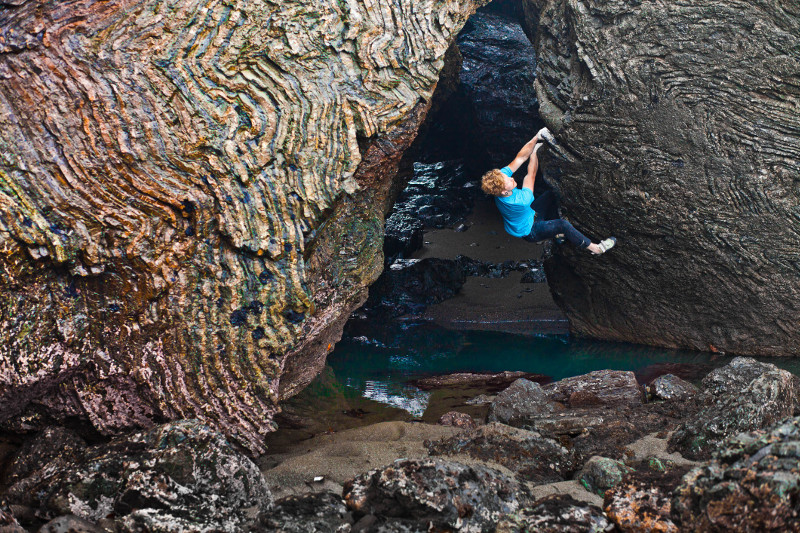
No names, no grades.
On hands and knees I burrowed through mud and blackberry brambles, creeping towards small rays of sunlight peeking through the thick brush and coastal fog. Bumps from stinging nettle bushes began to rise on my ankles, shoulders, and face. Poison oak laced the undergrowth in thick, unavoidable patches. I stopped dead when my jacket caught on the branch of an alder tree. I struggled until I was finally set free from the limb. In an instant I lost my balance and lurched forward down the muddy slope.
After a few feet of sliding on my elbows and knees, face-diving through Frisbee-sized spider webs, I came to an abrupt stop on flat ground. I looked up to see the rest of the group bounding down the overgrown trail. They laughed and carried on conversation as they hacked through blackberry vines with long pieces of driftwood. I had adapted to rock climbing on the North Coast about as quickly as the turtle could evolve to run down gazelle. Still, the sound of each breaking wave and thoughts of perfect grey boulders perched on cobbled beaches kept me crawling forward.
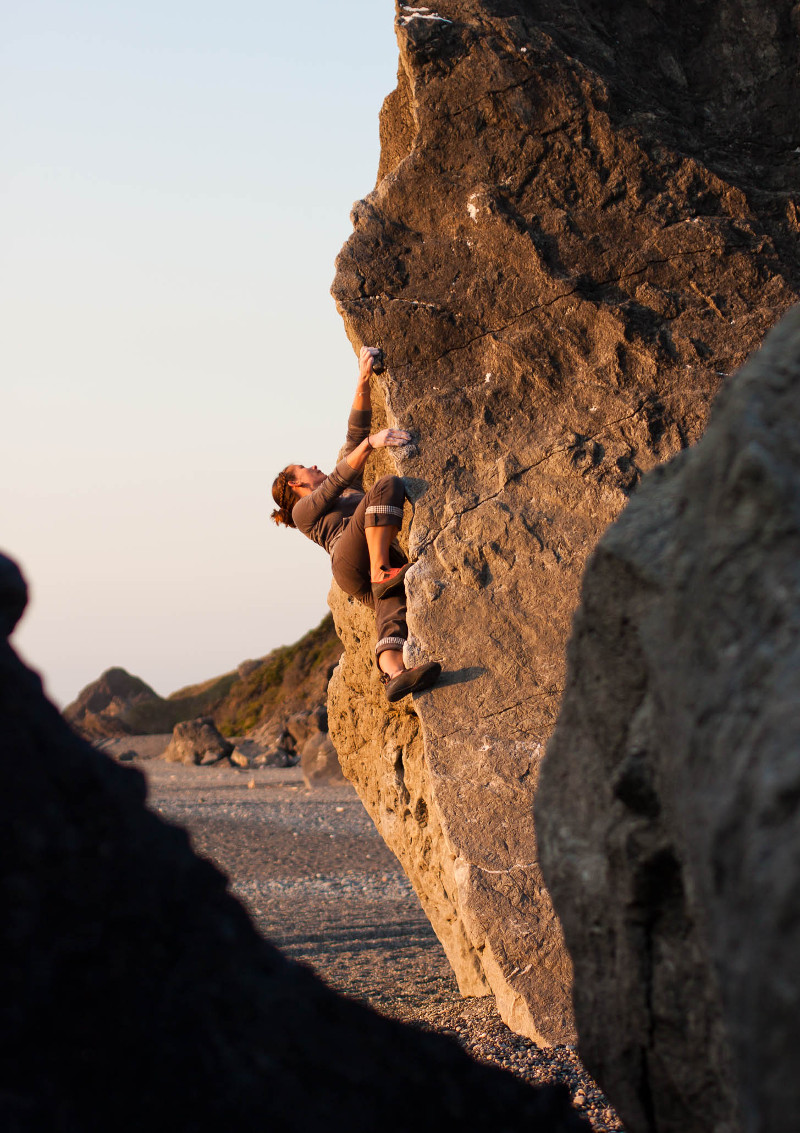
The smooth metamorphic rock south of the Klamath River is a gift from the San Andreas Fault: unique, house-sized boulders slow-cooked for thousands of years far below the Earth’s crust until finally rising to perch on a five-mile stretch of flat, sandy beach. Intersected with striking quartz veins and littered with interesting climbing options, these blocks would provide a lifetime of rock climbing adventures for anyone willing to travel south of the main climbing areas.
Gazing over the coastline from the steep vantage point above the Pacific as a thick blanket of coastal fog drifts in and engulfs the pristine landscape, it’s easy to see why visitors and residents alike consider Lost Rocks sacred. Climbers have been visiting the massive gray blocks that litter the beaches here since the early 1980s, and in that time a strong tradition has been forged; a custom intended to preserve the wild nature of this unique area. Although a few of the most obvious blocks, like the Flake Boulder, haven’t quite escaped our basic instinct name the things we find, the vast majority of boulders and problems at Lost Rocks remain unnamed and ungraded.
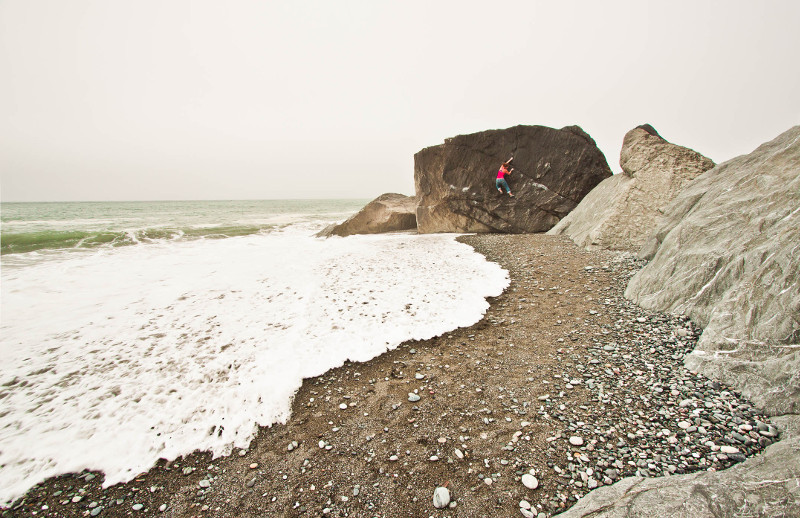
As the years pass and we grow intimate with this region, we find that this practice does suit a utilitarian purpose: as the tides change, the sand levels rise and fall with them. In one season a block may reach heights over 40 feet, and in other seasons this same block could sit at a scant 5 feet tall. Because of this, the nature and difficulty of each problem found at Lost Rocks will often change drastically multiple times each year.
What can you expect if you do decide to visit Lost Rocks? You certainly won’t find a well-known classic that you can check off in a guidebook or list in your 8a.nu account. But there are a few things here that never seem to change, like the thundering sounds of one of California’s roughest shore breaks booming across the beach and up the steep, brushy hillsides. Here you can also witness some of the most diverse and unique wildlife including elk, otters, whales, black bears, and salmon. Of course, you’ll probably get beat down by the mud and poison oak and stinging nettle and mist and rain and mile-long hikes with heavy loads…But maybe you’ll find it’s all worth the while, and maybe you’ll even be inspired. Perhaps you’ll even pick up a few pieces of trash on your way out.
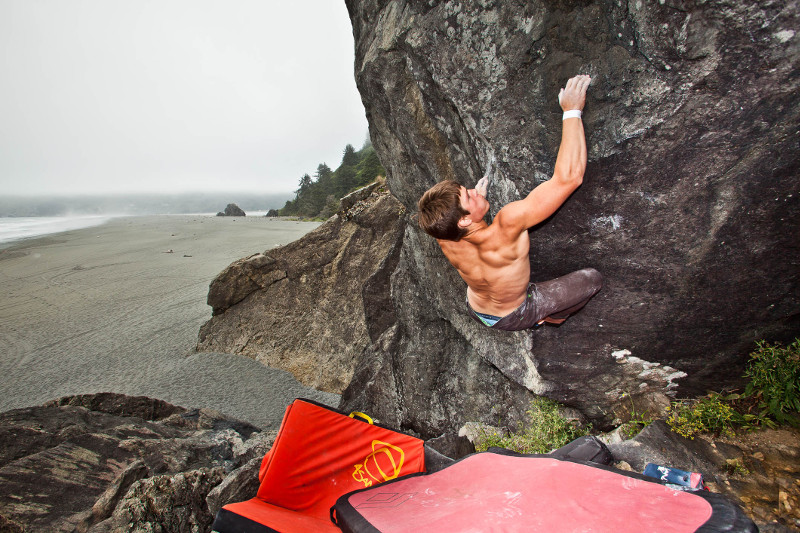
Whatever you decide, if you do intend to make the long drive north to this wonderful region, please use the utmost respect and admiration during your visit.
Special Concerns
In the early 2000s, climbers learned that the land adjacent to the mouth of the Klamath River is private property owned by the Yurok Tribe and the rock closest to the Klamath, named Oregos, has cultural significance. It was publicly made known that there is to be no climbing on the private property from the Klamath River to Flint Rock. Around the same time, local climbers enforced a voluntary climbing ban on Split Rock out of respect for the Yurok’s unique ceremonial location. Climbing at Lost Rocks and High Bluffs continued, with the ethic being on emphasizing respect of the land and the visitors. Please adhere to these restrictions when visiting the Lost Rocks area.
